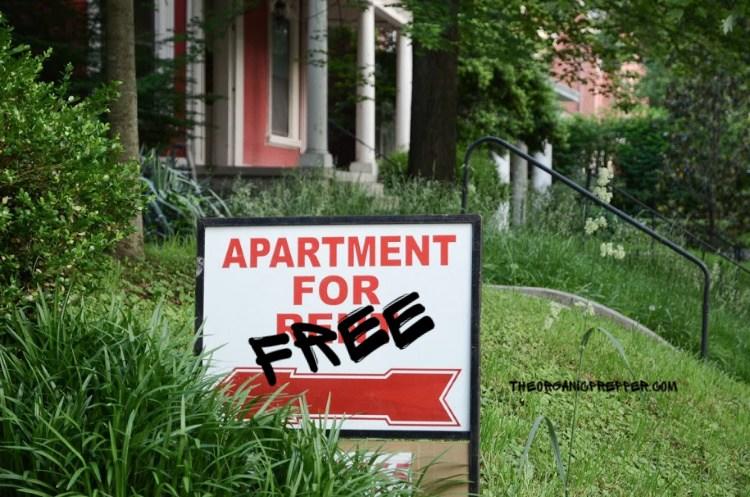Will Congress Bankrupt The Mom-And-Pop Landlord With This Socialist New Bill?
Tyler Durden
Fri, 05/15/2020 – 17:30
Authored by Diane Kennedy via The Organic Prepper blog,
Mom and pop landlords, defined as real estate investors who own 10 or fewer properties, own about half of all rental units nationwide. And, according to CoreLogic, a real estate data company, the number of small investors is growing. In 2018, they were responsible for 60% of all purchases, as compared to 48% in 2013.
Let’s get clear on who the target of the latest proposed House bill, “Take Responsibility for Workers and Families Act” will be, at least as it relates to landlords.
It’s the mom and pop landlord.
It’s the people who have often put their entire life savings into a few properties hoping to build up their assets or creating a retirement income to supplement their lackluster Social Security benefits.
And now, Mom and Pop landlords are under attack.
First, there was the Emergency Rent and Mortgage Cancellation Legislation.
It began with a non-starter, like a shot across the bow called the “Emergency Rent and Mortgage Cancellation Legislation” sponsored by Rep. Ilham Omar. You can read that proposed bill here.
This bill first floated the idea of a Congress mandated payment cancellation for all rent effective April 2020 and lasting the duration of the national emergency. During that time, no one could be evicted for nonpayment of rent. No interest or late payment could accrue.
Landlords could apply for help with the payments since they now bear the brunt of the cost of maintaining a property including mortgage interest, property tax, insurance, HOA dues, repairs, and the like.
But there’s a catch.
Under the “Emergency Rent and Mortgage Cancellation Legislation”, if the landlord gets help, then he has to agree to some terms:
Requirements – Landlords who receive relief funds through the HUD program must agree to the following fair renting terms for a period of 5 years:
i. a rent freeze;
ii. just-cause evictions;
iii. mandatory documentation with any just-cause eviction;
iv. no source of income discrimination;
v. coordination with local housing authorities to make new vacancies eligible to voucher holders;
vi. provision of 10 percent equity to tenants; and,
vii. no admissions restrictions on the basis of:
sexual identity or orientation,
gender identity or expression,
conviction or arrest record,
credit history, or
immigration status.
If you’re a mom and pop landlord, congratulations! You just got a new partner! It’s your tenant who hasn’t put a dime into the property and has lived there for free for months.
That bill didn’t get much further, but unfortunately, some of the ideas are back again.
Now there’s the “Take Responsibility for Workers and Families Act”
There’s a new Bill introduced on 5/12/2020, the “Take Responsibility for Workers and Families Act” You can read that bill here.
There are over 1400 pages in the Act and it would take much longer than this article to carefully analyze each piece. So, let’s focus just on the part that impacts the Mom and Pop landlord.
It starts with rent. If you own subsidized housing, the tenants aren’t required to pay but there appears to be some help you as the landlord can get with the payments.
There are also some smaller amounts set aside for areas that have the worst unemployment rate. But it’s not a lot of money and the rules aren’t very clear. Without clear-cut guidelines, it seems like the money never ends up where it’s planned.
If you own regular rentals, be prepared to subsidize your tenants.
Unfortunately, there is a whole lot less help if you own regular rentals. The following applies for all property, referred to as “covered dwellings” in the Act:
“The term ‘‘covered dwelling’’ means a dwelling that is occupied by a tenant— (A) pursuant to a residential lease; or (B) without a lease or with a lease terminable at will under State law.” (see page 531)
Basically, all residential rental property falls into this category.
Here is what is said,
The lessor of a covered dwelling may not make, or cause to be made, any filing with the court of jurisdiction to initiate a legal action to recover possession of the covered dwelling from the tenant regardless of cause, except when a tenant perpetrates a serious criminal act that threatens the health, life, or safety of other tenants, owners, or staff of the property in which the covered dwelling is located. (see page 531)
The period to be covered is from the date of enactment of the bill until 6 months after the end of the emergency declared on March 13, 2020 (page 526).
That means that the landlord can’t evict a tenant who doesn’t pay. It also means that the landlord can’t evict a tenant who vandalizes a property, rips out all the appliances, equipment, furnishings and floor coverings or who is threatening to other tenants. It also means you can’t evict for petty crimes. You can only evict if there is a serious criminal act that threatens your life or that of other tenants.
That’s a pretty broad window.
Here’s what this means for the landlord.
But let’s consider what that means for the Mom and Pop landlord. Not only have he or she saved for the down payment, forgoing luxuries they would have wanted but also weekends and evenings caring for the property.
According to data from the National Apartment Association, Real Capital Analytics, and the Institute of Real Estate Management, for every dollar of rent that is received, the following is allocated:
-
39 cents goes to the mortgage payment
-
14 cents goes to property tax,
-
27 cents goes to ongoing maintenance,
-
10 cents goes to major improvements, and
-
Just 9 cents goes to the owner.
There is a promise of forbearance in the bill. However, it’s not quite as all-encompassing as you might hope. It’s only for single-family homes (defined as 1-4-unit properties) and mobile homes. The forbearance period would be basically the same as the rental stay period. However, the amount of the forbearance will need to be repaid. There are some guidelines to either extend the loan period or reduce the rent.
So, while the tenant can avoid paying and actually cause physical damage to the property, the owner will need to keep paying for property tax, insurance, HOA dues, repairs, and the like. And he will need to catch up on the payments one way or the other at the end. There is no requirement for the tenant to ever pay for the missed payments, unpaid utilities, or damages.
If you have a multi-family unit (defined as 5 or more units), your tenants have the same rights to not pay you and to not be evicted, but you have an even shorter period to pay back the missed mortgage payments.
Then there’s this issue for investors.
There is one more warning in the real estate section. It has to do with investors in the real estate secondary market. They really make the market work. When you, as a real estate buyer, purchase a home with a loan from your Local Bank, Local Bank needs to package and sell that loan as soon as possible. Local Bank makes money giving out loans, not holding loans. The market works by securitizing mortgages.
Congress warns us that real estate lending might not be a good investment. From page 565, “Investors in mortgage securitizations are or should be aware of servicers’ thin capitalization, liquidity expectation that the terms of servicing contracts will be enforceable at times of national financial crisis.”
Since the small Mom and Pop real estate investors often rely on mortgages for their small investments, this could be another blow as investors are warned away from the investment by an Act of Congress, no less.
As of today, this is still just a proposed bill. Some or none of it may pass into law. This is something to watch, though, as things are rapidly changing.

